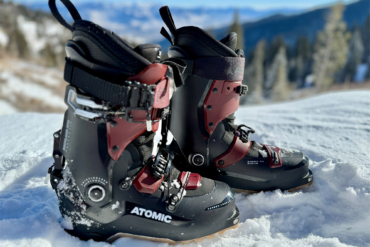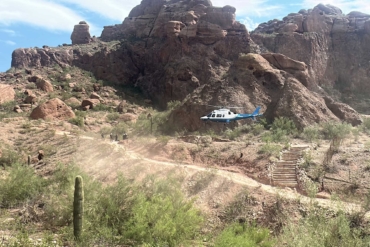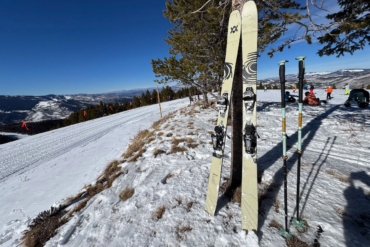Skating, fishing, hiking, fat-biking: Winter’s freeze offers up new areas to explore. But with it comes the danger of falling through thin ice.

As the mercury drops, some of us in the northern latitudes will be heading out onto the ice in search of winter activity. Should you fall in, here are some tips to extract yourself.
How to Identify Thin Ice
Not all thin ice can be easily spotted. But, in general, blue, clear ice is stronger than milky ice that has been through repeated freeze/thaw cycles.
Snow is an insulator. Ice covered by snow or slush can be thinner and should be presumed questionable early in the season.
Where Thin Ice is Found
In general, warm spells and spring are most dangerous times of year. The ice can be brittle and more likely to fracture. Early season can also be dangerous, when the ice hasn’t had a chance to freeze uniformly thick yet.
How to Avoid Falling Through
The best way to avoid falling through ice is to stay off the ice. But that doesn’t answer the question, does it?
Be aware of beaver dams, pressure cracks and depressions, running water, springs, or other areas that can prevent ice from freezing thick. Plus, the risk can be managed further. According to the Minnesota Department of Natural Resources:
- 4 inches or less, stay off ice
- 5–7 inches can support an ATV or snowmobile
- 8–12 inches can support a car or small pickup
- 13+ inches can support a midsize truck
But understand that ice rarely freezes at a uniform rate and can vary from safe to unsafe within mere feet.
For those who choose to travel on thin ice, emergency ice picks provide a little grip for pulling oneself from the water. They aren’t a guarantee, but they’re certainly better than nothing.
What to Do if You Fall Through Thin Ice
Don’t panic. It’s easier said than done, but the “cold shock phenomenon” will knock the air out of you and leave you gasping. Take a minute to calm down and catch your breath. The body will eventually get itself back in control.
Pitch heavy gear, like fishing or hunting gear or skis. No amount of gear is worth holding onto. It will weigh you down and make it hard to get out.
If you break through ice while on a snowmobile, let go of it. Try to roll off the machine and onto solid ice.
Leave your clothes on. Clothing can trap air, providing some buoyancy and warmth. Exposed arms and legs will quickly become clumsy in the cold and could easily get tangled up while trying to remove any clothing, potentially drowning the victim.
Turn around. Try to get out the way you came in. It’s the most stable ice you can be sure of.
Place both hands on the ice’s surface. Stretch out and reach over solid ice.
Wet ice is slick. If you have a knife or keys, use them as mechanical claws to clutch the ice and pull yourself out. Wool gloves can also provide some sticky traction.
Kick your legs. Kick your legs up, parallel to the ice. Use your hands and arms to pull up onto the ice. If you took in a lot of water, let it drain from your clothes. Continue to shimmy onto the ice.
Stay prone and roll away. Congratulations! You made it out. The last thing you need is to fall back in. Distribute your weight across the ice as much as possible.
Roll out the way you came in. This will continue to distribute your weight and get you out as quick and safely as possible.
“Gets.” Get inside, get out of your wet clothes, get warmed up, and get medical attention if you feel disoriented or are shivering uncontrollably. The body can slip into shock, or worse, cardiac arrest.
Can’t get out? Stay close to the lip of the hole and get as much of your body out of the water as possible. Your jacket and arms will freeze to the side of the ice and keep you from falling into the hole after you pass out. Hopefully a passerby will find you soon to help.
Worst-Case Scenario
Falling through thin ice can be fatal. But with your wits, you’ve got a good 15 minutes of exposure before the muscles can’t function. Bottom line, though, be cautious before heading out on questionable ice.








